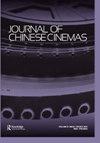Remixing Chineseness: Censorship, disembodiment and the voice in Hong Kong digital media
IF 0.4
3区 艺术学
0 FILM, RADIO, TELEVISION
引用次数: 1
Abstract
Abstract There is no official censorship in Hong Kong, but the need to consider the structure of co-production with China and the PRC audience’s buying power has forced filmmakers to be cautious about the content of mainstream cinema. Ultimately such considerations and its ties to censorship have dramatic effects on film production in Hong Kong. As an alternative space for cultural industries, videos on online social networking platforms, such as YouTube, have become more popular as creative outlets for those living in Hong Kong to critique the increasing presence of the PRC. By examining the work of GVA Creative, a group of Hong Kong-based video producers, this article sheds light on how cultural icons, such as Guan Yu and Lei Feng among others, are mobilized as a rhetoric of Chineseness. In other words, Chineseness in the digital age must be considered a form of rhetoric that can be deployed for various purposes, such as a form of resistance to mainstream censorship among others. Furthermore, the visual citation of familiar figures in Sinophone communities is one that is remixed in the YouTube videos rather than images that simply reinforce state ideology. This process of remixing Chineseness is a participatory practice that contributes to the formation of a visual language that gives voice to marginalized groups in the face of state hegemony and other forms of censorship in the Sinophone world.重新融合中国性:香港数码媒体的审查、分离与声音
香港没有官方的审查制度,但考虑到与中国大陆合拍的结构和中国大陆观众的购买力,电影人不得不对主流电影的内容持谨慎态度。最终,这种考虑及其与审查制度的关系对香港的电影制作产生了巨大影响。作为文化产业的另一个空间,YouTube等在线社交网络平台上的视频作为香港人批评中国日益增长的存在的创意渠道,越来越受欢迎。本文通过考察香港视频制作人GVA Creative的作品,揭示了关羽和雷锋等文化偶像是如何被动员起来作为一种中国性的修辞。换句话说,数字时代的中国性必须被视为一种修辞形式,可以用于各种目的,例如抵抗主流审查制度等。此外,在YouTube的影片中,我们会重新引用华语社群中熟悉的人物,而不是单纯强化国家意识形态的影像。这种重新融合中国性的过程是一种参与性的实践,有助于形成一种视觉语言,在面对国家霸权和华语世界其他形式的审查时,为边缘化群体提供声音。
本文章由计算机程序翻译,如有差异,请以英文原文为准。
求助全文
约1分钟内获得全文
求助全文

 求助内容:
求助内容: 应助结果提醒方式:
应助结果提醒方式:


